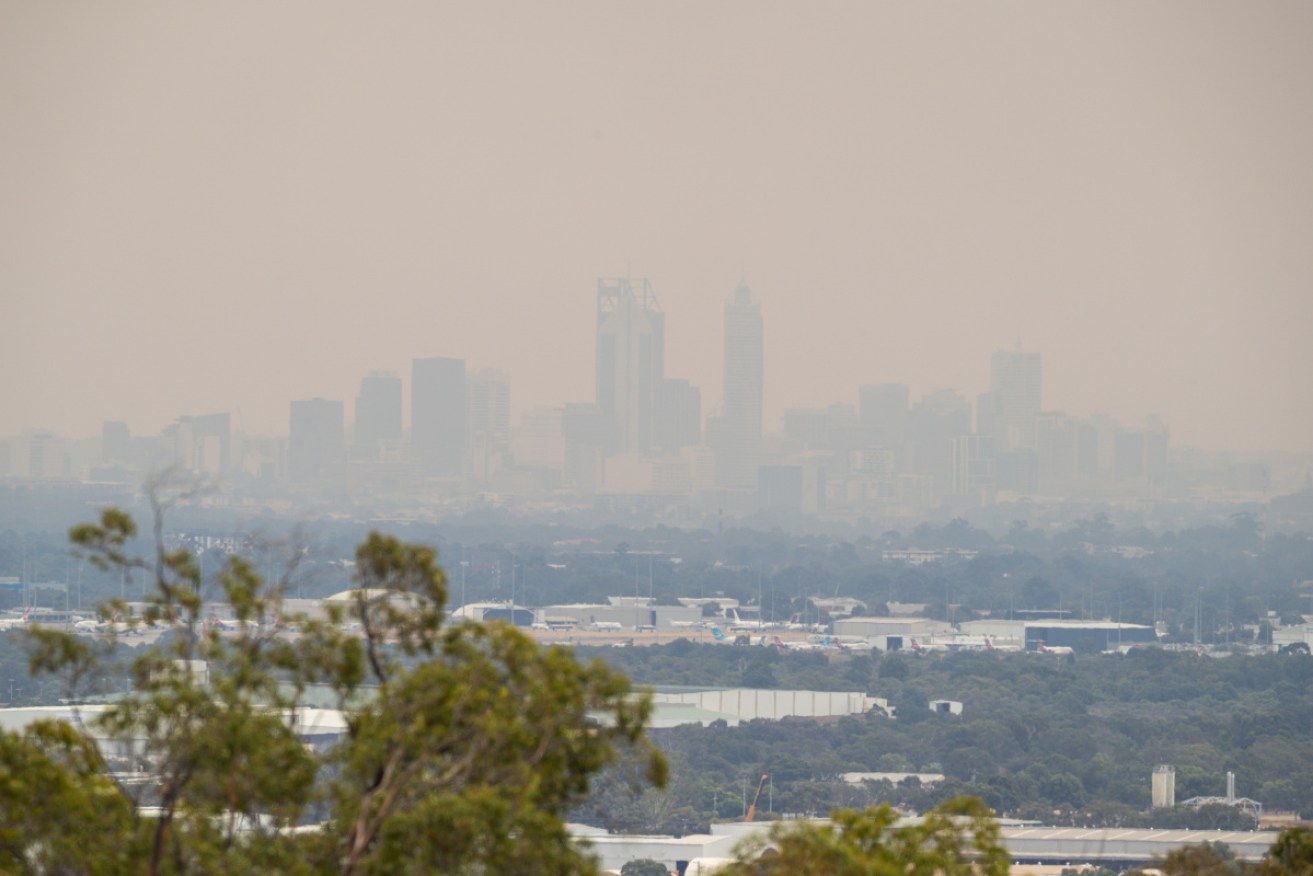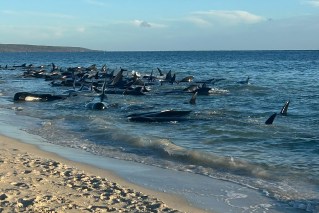CSIRO study finds climate change is fuelling more ‘megafires’ in Australia

Smoke from a bushfire envelopes Perth in February 2021. Photo: AAP
Climate change is fuelling the risk of more “megafire years” in Australia and the nation is dealing with a longer fire season that extends well into autumn and winter, new CSIRO research says.
Scientists have released a landmark analysis of fire activity in 324,000 sq km of forest, mostly along Australia’s highly-populated east coast.
They say climate change is the “overwhelming factor driving fire activity” and it is to blame for a significant increase in the intensity and frequency of forest fires over the past 30 years.
Their report notes that three of the four “megafire years” — in which Australia lost more than one million hectares of forest — have occurred since the year 2000. That land mass is about four times the size of the United Kingdom.
CSIRO scientist Pep Canadell says the frequency of forest megafires is likely to continue.
At the same time the duration of the fire season is growing and extending into autumn and winter — the months fire authorities typically use to carry out prescribed burns to reduce the risk of dangerous blazes.
“Everything that happened after 2000, really the whole system has changed quite significantly in terms of the large fires. It’s very different from what we’d seen in the previous decades,” Dr Canadell says.
“There were clear rest areas and regions and times where there was little fire activity. All this has completely changed over the last 15 years where fundamentally the fire hazard has spread throughout the entire 12 months.
“We have had a three-fold increase in autumn, and a five-fold increase in winter.”
The average amount of time between major fires hitting the same areas is also shrinking.
In places like the Mountain Ash and Alpine Ash forests of southeastern Australia, fires are beginning to return too frequently to allow for regeneration, raising the prospect of ecosystem collapse.
“Many native animals will be threatened by the greatly reducing fire return interval,” fellow CSIRO scientist Garry Cook says.
Then there the issue of resourcing fire services to cope with much longer period of fire risk.
“There won’t be an off season,” he warns.
“We are going to face an increasing difficulty managing this, and it’s going to make it increasingly hard to live and work in the area of these forests.
“That means capital cities next to forests … those scenes of Sydney bathed in orange light from the smoke, this is going to be increasingly our future.”
He said the only long-term solution would be the manage the production of greenhouse gasses.
Australia’s mean temperature has increased by 1.4C since 1910 and scientists have long been warning the nation’s fire danger will rise alongside the temperature of the planet.
The research has been published in the journal Nature Communications.
-AAP








